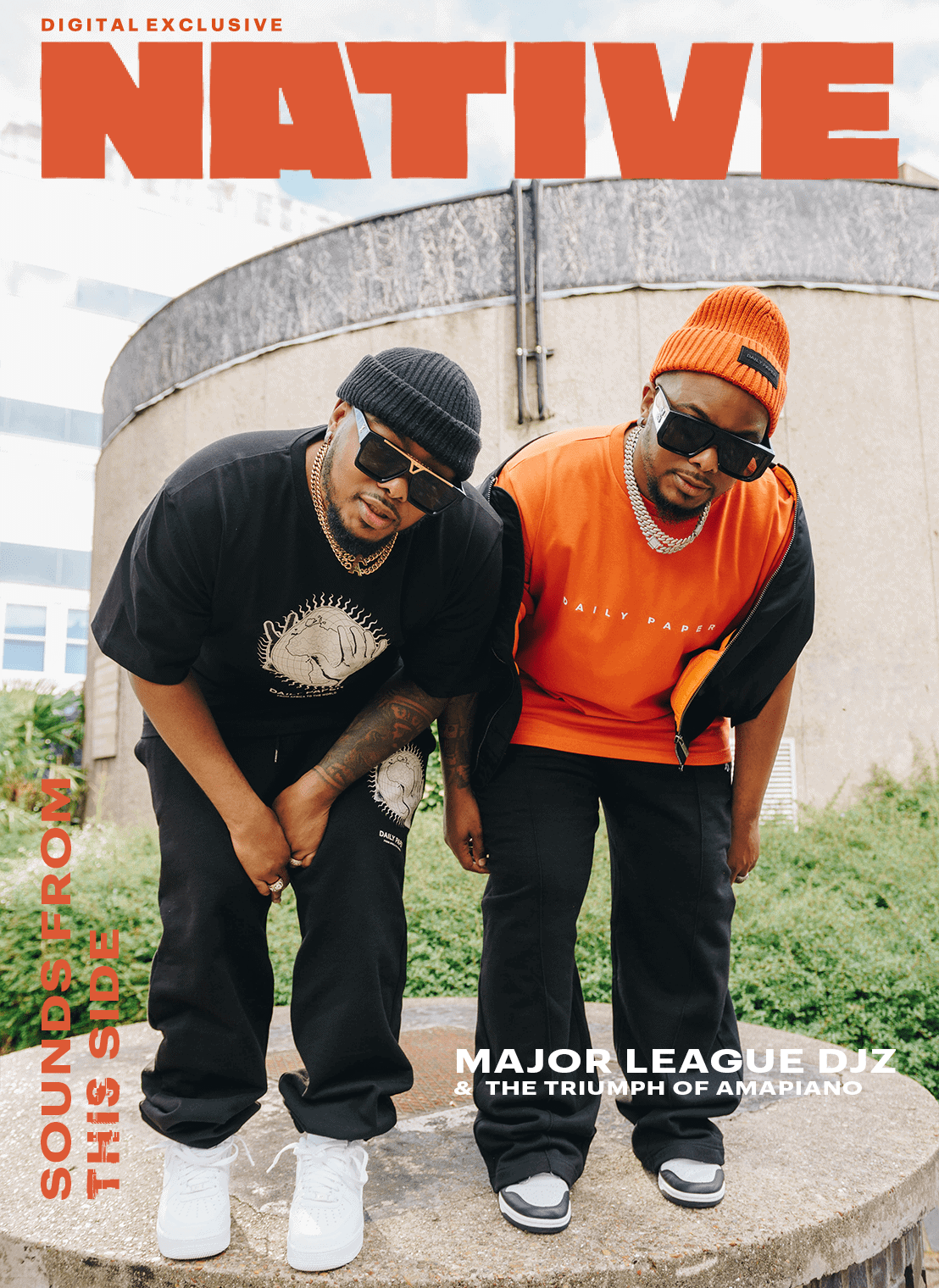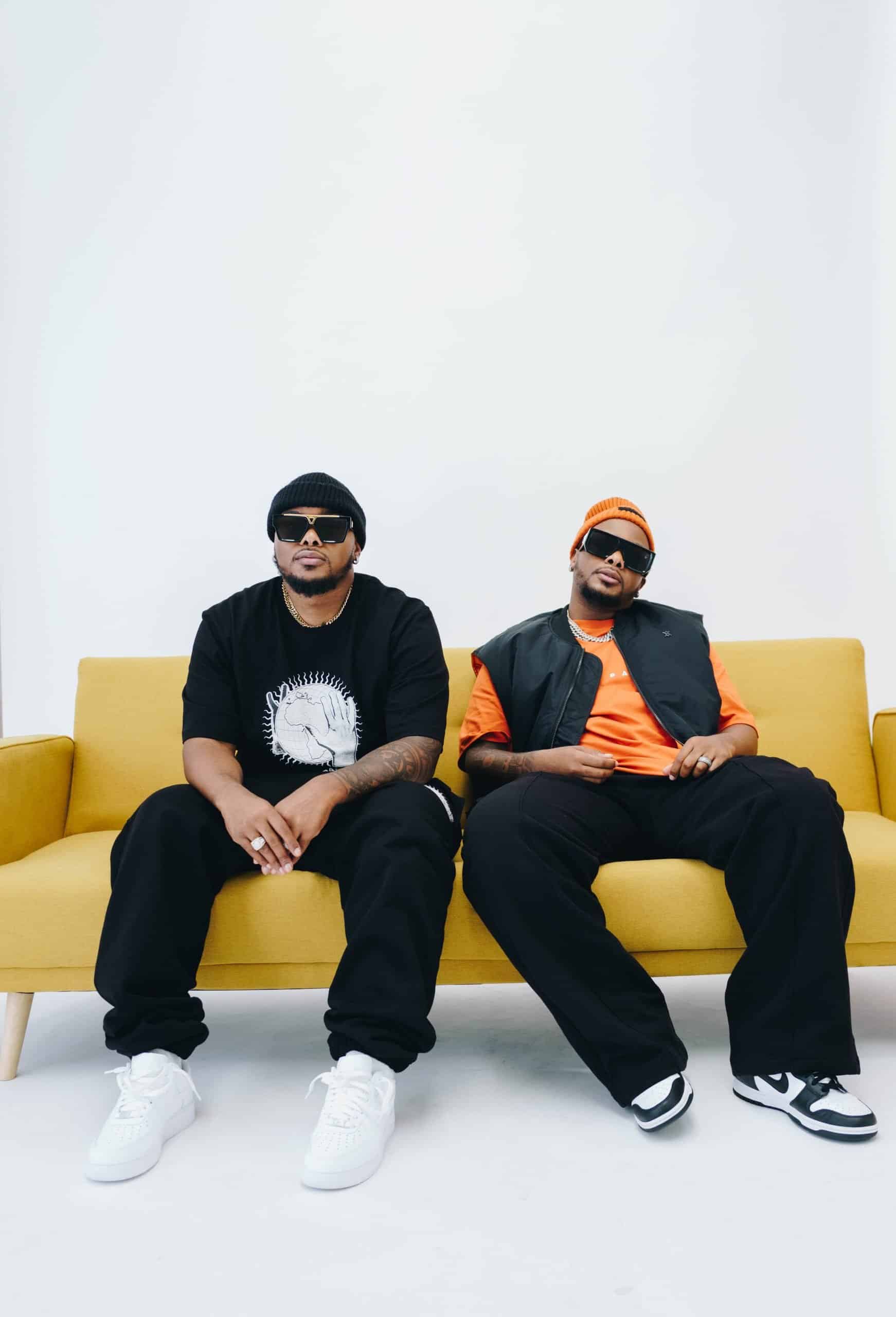
Credits:
Editor-In-Chief: Seni Saraki
Head Of Content Strategy: Damilola Animashaun
Managing Editor: Tami Makinde
Senior Editor: Adewojumi Aderemi
Writer: Setumo-Thebe Mohlomi
Creative Assistant: Ada Nwakor
Editorial Assistant: Wonu Osikoya
Editorial Interns: Mooreoluwa Wright, Nwanneamaka Igwe, Bolakale Ogboye
Cover design: Adeshina Ladipo and AbdulRahman Dawodu
Collage design: Chukwuka Nwobi
Johannesburg
Photographer: Setumo-Thebe Mohlomi
Art Director: Thembisa Kotobe
Lighting: Themba Vilakazi
Director: Loyiso Mzamane
Stylist: Sibusiso Yanta
Make-up: Mbalenhle Guma
Producer: Ntombi Mabuza
Set Assistants: Wandili Mniki, Palesa Bogopa
London
Photographer: Ibrahim Adewole
Stylist Assistant: Zoe Shay
Make-Up Artist: Luz Giraldo
Photography Assitant: Adedamola Samson
Videographer: Omowunmi Ogundipe
Producer: Jess Ajose
Runner: Sam Adeosun
The night before any lengthy road journey is filled with furious preparation. Principal amongst the priorities is making sure there is enough to eat and drink. For many Black South Africans, the smell of fried chicken pervading through the house the night before is as memorable a part of the road trip as the anticipation and trepidation of the journey. Advice is dished out in ladlefuls by those who have travelled the same or similar roads, as the mofaho is neatly arranged into skafthini, to be devoured the next day.
In South Africa, the slang word skafthini can mean the food (mofaho) one carries in a container for later, or the vessel the food comes in. Jazz, Kwaito, Bubblegum, diBacardi as well as Deep, Tribal, Afro and Tech-House – these were skafthini to the now globally consumed hit genre emerging out of Africa in the new decade. These sounds have provided vessels for the growing genre, influencing the shape of Amapiano instrumentation as well as its structure, style and tone of lyrics.
Amapiano’s home is in the Black South African townships at the outskirts of cities in the country’s Gauteng province. Cropping up as a production-led soundscape, as lyrics have become more prevalent in Amapiano, the songs now overtly embody the genre’s primary driving point: Aspiration. Especially realised through money and class, aspiration has been pronounced in how South Africans identify and refer to themselves. How we move – physically and socio-economically – as well as where we live, work and play is all defined by our aspirations.
Kasi to Burbs
Apartheid city planning separated South Africans according to their racial designation, creating Black townships at the edges of cities and towns. These are historically radically less resourced compared to the more affluent areas formerly reserved for white people. Black South African townships remain comparatively underdeveloped. When South Africa became a democracy in 1994, the flesh of Apartheid was stripped, but its discriminative and repressive bones remained. Previously found to have the world’s highest Gini coefficient – a universally accepted measurement of income inequality – South Africa is considered one of the most unequal societies in the world. Broad, tarred, tree-lined suburban roads with mansions on either side are mere minutes down the highway from potholed, dirt roads that run between the shacks of informal settlements.
Upward social mobility into the middle and upper classes for Black people, and racial equality are keystones of the South African democratic project. Today, there are Black people living in suburbs and working at jobs previously the preserve of white people. But for the majority of South Africans, poverty is entrenched, oppressive and inescapable. It is in this desolation that Black townships concurrently engender artistic creativity and innovation.
Lethabo Sebetso – who performs as the lyricist Focalistic – is explicitly pro-kasi (township), though also an aspirant in his music. His Amapiano collaborations with producers such as Vigro Deep, Major League Djz and Scorpion Kings have solidified Focalistic’s place as one of the movement’s frontrunners. Focalistic has also cropped up alongside the Major League DJz, previously known as Hip-Hop acts, who made the switch to Amapiano three years ago, helping the infant scene gain traction.
Starting out producing New Age Kwaito music, which they describe as a more Hip-Hop inclined variant of the House sound that prevails in South Africa, Major League are champions of the approach to “hlanganisa” (combine) that The Lowkeyz describe as the principal characteristic in the collaborative ethos of Amapiano. Collaborating with the wide array of South African artists in mainstream conversation, Major League DJz explain that Amapiano is a constant joint effort, giving the genre its ease, diversity and lengthy credits. “We throw around music so much! That’s why you can find like three producers on the song, because music is just thrown around. Or, you could have a session and everyone’s touching, touching and then you have a song.”
Releasing a joint project alongside Focalistic in 2019, the Major League DJz have gone on to score bigger hits, including “Shoota Moghel” with Focalistic and The Lowkeys, as well as “Ndikuze” with Moonchild Sannely. This joint project also elevated Focalistic, who, this year, peaked at number eight on the Billboard Global charts with the remix of “Ke Star” featuring Davido. In a dark staircase at the launch of his album ‘Sghubu Ses Excellent’, Focalistic said about his beginnings, “South Africans are tired of fake stuff. They’re tired of a fake life. They’re tired of you talking about how many cars you have. They want to hear a real, genuine story.”
The geographical and, through contemporary media, digital proximity between the impoverished hoods and the wealthy enclaves that flaunt an envious glamour, is an intimidating reality for the predominantly Black South Africans that populate the former space. It took Focalistic years to unlearn his toxic ambition that manifested itself in shame for his roots. “I’ve been blessed. I used to be so embarrassed of coming from a mkhukhu (shack),” Focalistic admits, “until my mom said ‘That’s your journey and if you’re not ready to embrace it, no one will embrace it for you. You come from a mkhukhu but your parents worked hard to get out of there.’”
On “Sandton”, produced by Kabza De Small and DJ Maphorisa, Focalistic sings “the nyoko, chelete, chommie hareye Sandton“ (the cash money, let’s go to Sandton my friend). Rapping about going to an affluent suburb in Johannesburg’s North, Focalistic’s journey to Sandton, which is commonly referred to as Africa’s richest square mile, uses physical mobility to illustrate social mobility. In these bars, Sandton is not only a physical place, it is the symbol of affluent living to which Focalistic, and others, aspire.
From their origins in Alexandra township, the now separated JazziDisciples would have been able to see the gilded skyscrapers of Sandton’s central business district – a buttress of corporate South Africa. A monument to the life these artists wished to attain, for the many Black South Africans growing up in marginalised townships, Sandton was always within sight. For artists forcing their way out of the hood, always within reach.
Speaking about his first solo album titled ‘Party with the English’, Tumelo Manyoni, who produces and performs as Mr JazziQ said, “The title of the album was based on widening up the market instead of just keeping it in the township. My whole reason [for] saying ‘Party with the English’ was to involve everyone in it, not just keeping it in the township or in the hood or whatever the case is. The whole point for me was looking at it in a much broader perspective, and also getting the international market engaged and involved; so that it’s a South African thing, but it’s also for the rest of the world.”
Amapiano lyrics are littered with references to Sandton, with each one adding a layer of complexity to the place’s role in popular culture and what it symbolises for different artists. On his 2019 record named after the wealth-ridden suburb – and, in fact produced by JazziDisciples – Killer Kau sings “Awuna moto, awuna cherry, awuna Gucci. Ufunani eSandton? Wenzani eSandton?”(You don’t have a car, a girlfriend and Gucci. What do you want in Sandton? What are you doing in Sandton?). On “Impilo yaseSandton” (2021) by Mpura, the artist pleads “Umzali ahlale’ thembeni, ngizoba phandela impilo yaseSandton.” (My parents should trust that I’ll hustle a Sandton life for them).
The N4, is one of the highways that connect Johannesburg to its disparate satellites. On 9 August, Killer Kau and Mpura were involved in a lethal, head-on car collision. Up and coming artists Khanya “The Voice” Hadebe, DJ Thando Tot and TD also lost their lives in the accident. The grief at the lives lost shook the core of the South African electronic music scene, especially with Mpura and Killer Kau having been favoured by fans and artists alike.
Three months prior, on 23 May 2021, legendary Kwaito musician, Emmanuel Matsane was involved in a fatal car accident after a performance. He had been part of the seminal Kwaito group, Trompies who were vital pioneers of the sound, dance and style of Kwaito music from the mid 90s. Roadways also claimed the immensely popular Lebo Mathosa in 2006 on the N3 highway on Johannesburg’s East Rand, robbing South African music of a contemporary icon.
As Amapiano has journeyed out the country, flying its flag bearers into the clouds and promising rising acts a chance to touch the skies, the perils of the fast life seems to be inescapable, from generation to generation. Nigerian author Ben Okri’s words opening his novel Famished Road are apt for the tragedies that beset South African music: “In the beginning there was a river. The river became a road and the road branched out to the whole world. And because the road was once a river, it was always hungry.”
Transported and exported
To travel the roads that connect communities, townships, suburbs and cities in South Africa is to also witness the orchestration of the society’s division. Amapiano developed near-simultaneously in different Black South African townships. But it developed in these areas the way that it did partly because of the cultural economy that has driven South African musics’ development – during apartheid and now.
Taverns, also called shebeens, in Black South African townships are liquor outlets that typically turn their profits from buying liquor at bulk prices and/or on consignment from suppliers and selling to their patrons at a markup. Shebeens where empty beer crates double as seats usually have the cheapest beer and are known as emacratini.
They are also the locations where, when Amapiano was a growing underground sound, DJs could cater for small audiences. Shebeens sustained Amapiano when the sound faced backlash from established venues and DJs. Today, these venues are where the experimental ethos of Amapiano lives on.
Dunk’s Place in Zone 10 Meadowlands – ‘Msotra’ to the hip – is one such venue. The beer crates filled with empty beer bottles line the left and right-hand walls of what was a single lane driveway that doubles as the seating area for patrons. Lady Du walks into Dunk’s place stricken with grief. Her close friends, Killer Kau and Mpura, had passed away days before and the memorial service for the former artist was scheduled for that evening. “I think that I needed this,” she says.
Lady Du is one of few woman frontrunners in Amapiano in the country. She travels to the UK a few days after the interview for a ten date tour. As Amapiano grows into the song of the summer in the West, South African music has been racking up its frequent flier miles, and Amapiano artists are its Gold members. Vigro Deep, DBN Gogo, and The Major League DJz are but a few Amapiano acts that Lady Du would join in London. As Amapiano continues to represent South Africa abroad, the Major League DJz are conscious to do the same, the percolating genre easing his mission to give South Africa a presence in every room. “I represent South Africa,” Bandile says, “I try bring the influence every single time I do something; I always try and [include] some local feel to anything we do.”
Twin brothers Banele and Bandile Mbere, grew up in the very same Sandton to which their peers aspire. The musical backgrounds of their pianist father and uncles – including Hugh Masekela and Caiphus Semenya – influenced their evolution of the brothers into the Major League DJz, less so their social environment. But similarly to Lady Du, whose father is the iconic DJ Choc, the DJing talent was incubated in these artists from a tender age and has been a primary influence of their sound in their lifetimes since. For Lady Du, the neighbourhood around her also played a part in fashioning the artist she is today.
“The life yase kasi [in the hood] is my inspiration. How I write my music, how I speak to people, how I behave, everything with me is hood. I have never been in a space or time where I have to change my character because that is who I am.”
As a woman in the male-dominated South African electronic music scene, born Duduzile Ngwenya, Lady Du has waited for decades for this break. A musical prodigy, Ngwenya’s father DJ Choc taught her how to mix at a young age. She won her first DJ ing competition at nine years-old and was already sure that that was her calling. But even as a relatively structured music economy in Sub-Saharan Africa, the sector poses major challenges for artists to consistently earn a living. When her breakout hit with Mr. JazziQ Superstar was released, Ngwenya was at her countless attempt at a music career.
The song is aspirant, mentioning how Lady Du wants the qualities, characteristics and success of famous artists in the country. It is also an invocation; she asks for all this from whichever powers make it “Possible”. As she and her peers stand in the spotlight of the latest sonic fad across the world, the ears upon which Lady DU’s ambitions fell certainly listened. Favourably so.
The Amapiano music movement has traversed township streets and flooded the tarred roads of middle class and affluent suburbs in South Africa alike. Next, the music took to the runway, becoming the sound of the year across Sub-Saharan Africa, soundtracking summer in the United Kingdom and beyond. As Amapiano is adopted by audiences and artists outside of South Africa, it is important to remember that it is still a sound created in South Africa’s poorest areas, that have minimal resources, blinding talent and astounding ambition.
“I think people should remember it came from South African townships. It was the youth’s music.”
Bubbling up across taverns throughout the streets of Johannesburg, beyond the kasi, it took Amapiano some time to catch on in the suburbs, which were heavily inundated with Hip-Hop at the time. “I don’t even think now it’s hit the peak in South Africa – where it’s so commercialised, where big brands are putting money into it – yet. [Amapiano] is gonna get that commercial success and I don’t want people to forget that this thing comes from here so we need to take it back there, ” Bandile continues.
Bags packed and skafthini in hand, Amapiano is in its first period as a globally influential soundscape, its artists are experiencing their dreams come into fruition. As the genres aspirations grow into reality Amapiano, most importantly. remains grounded; a heaving, creative, experimental, innovative groundswell in South African music. Amapiano is already global, but its futures remain at home, in the taverns, shebeens and smaller venues in South Africa’s Black townships.
“Always remember the roots, so if it gets watered down, you know where to go to to bring it back.”




